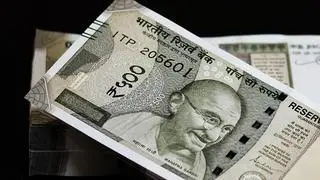The National Mineral Exploration Policy, released late last month, is a welcome effort to spur private participation and use of better technologies in reconnaissance activity. It seeks to address the shortcomings of past and present policies and laws, including the Metals and Minerals (Development and Regulation) Act 2015, in this respect. While the MMDRA made a path-breaking shift away from an arcane way of allocating mines, which was the genesis of the UPA coal scam, in favour of auctions, this could only have helped the scam-hit mining industry in the short run. A vibrant exploration sector is essential for the long-term growth of both the mining sector and the economy. The new policy identifies minerals (excluding coal and oil which have their own policy regimes), whose exploration should be prioritised in view of growth, current account, and strategic interests. Some of the priority minerals, besides gold, diamond and iron, are tin, cobalt, lithium, molybdenum, tungsten and rare earths. The policy also grapples with constraints holding back investor interest in mining — despite its being opened up to 100 per cent FDI. A stand-out feature is that successful explorers, besides being entitled to participate in the auction of mining leases, will get a share in future mining revenues payable by the leaseholder. Their costs stand to be compensated in the wake of an unsuccessful exploration effort. A hundred exploration blocks, all of them large areas that have been identified by the Geological Survey of India as having mining potential, will soon be up for e-auction, with the bid document for ‘reconnaissance permits’ already under preparation. The Centre does not want to lose time in locating minerals located deep below. Of the ‘obvious geological potential’ identified by GSI, only 10 per cent has been explored and less than 2 per cent mined.
A reliable, accessible database on mineral availability is critical to ensure proper price discovery, and hence credibility, in the auctioning of mining leases. It is also important for taking a strategic, long-term view on the rate of extraction. This is unfortunately something that the new policy does not address. The rampant mining of iron ore and bauxite in the run-up to the Beijing Olympics was not just a scam-ridden episode, but also one that highlighted the lack of a long-term view. The new policy takes a potshot at the National Minerals Policy 2008, saying that it “does not provide much direction for prioritisation of exploration through public expenditure”, but sidesteps this issue of over-exploitation, for which transparent processes are not necessarily the answer. It has pushed for relaxations in forest laws to allow for easier exploration.
The Centre, States and district mineral federations should credibly address rehabilitation and environmental concerns. The development agenda cannot work on the force of laws and policies alone; a socio-political consensus is just as important. However, the tendency to hold up development work on a whim or a suspicion should be avoided.







Comments
Comments have to be in English, and in full sentences. They cannot be abusive or personal. Please abide by our community guidelines for posting your comments.
We have migrated to a new commenting platform. If you are already a registered user of TheHindu Businessline and logged in, you may continue to engage with our articles. If you do not have an account please register and login to post comments. Users can access their older comments by logging into their accounts on Vuukle.